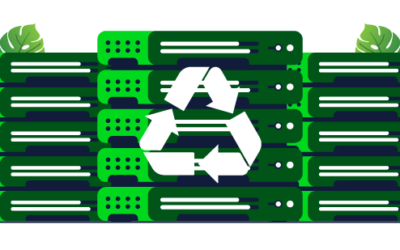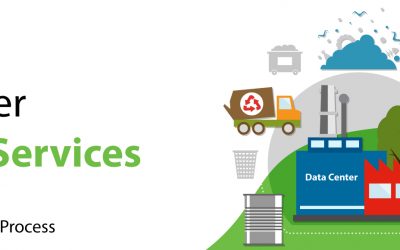7 Steps of Data Center Decommissioning Checklist?
Data decommissioning process is a complex and huge undertaking involving multiple pieces of high-value equipment. That’s why we have compiled a checklist of DC decommissioning during the planning and implementation phases that makes the complex process manageable. Additional parameters like reporting requirements, evaluation criteria, and specific terms and conditions must be considered in the planning process. The decommissioning method becomes simple and easier with robust strategy and planning.
7 steps for decommissioning:
Evaluate the server by performing a comprehensive audit
A server’s evaluation will determine the divergences between the software discovery audit, physical audit, and existing asset or CMDB asset. Mapping out each of the involved software and hardware assets. Before starting the project, make sure that a final review should take place for each area.
Develop a plan considering tool and labour requirements
As data decommissioning involves complex procedures, ensure that making it as simple as possible. It requires a combination of tracking sheets, hard copies, and templates. You need to consider the below-mentioned points while preparing a checklist for DC decommissioning:
Assess the tools and labour required for each step. The expert manager will create a list of tools and materials and estimate the number of individuals and hours needed for project completion.
Secure software licenses and cancel maintenance contracts
After organizing the hardware and assembling the inventory of assets, including servers, routers, network switches, storage, HVAC equipment, etc., compile and secure all software licenses for future purposes and terminate the licenses from maintenance contracts. Cross-check with the list again to detect any opportunities available for asset recovery.
Backup required data and perform data sanitization
Prior to decommissioning, it’s required to review the asset plan and recovery checklist with on-site team leaders and stakeholders. Ensure that the data has been backed up and migrate the necessary applications before disconnecting the servers from network connections. Perform the data sanitization before being packed the servers or hardware and generate the digital certifications. Specify the information regarding erase, shred, degauss, or recycling for each device.
Unplug the server from the network and separate it from the rack
After completing the sanitization and data backup, disconnect servers from the current network and remove them from rack space while ensuring no data loss.
Label the hardware and pack the entire server equipment
The success of decommissioning relies on the proper implementation of a DC decommissioning checklist. So, the hardware should be labeled with alphanumeric tags and coloured labels in addition to the acceptable printouts for identifying the hardware. As mentioned in the plan, pack every device with concerning packaging materials. Use the handoff protocol for items that can be reused while labeling the refurbished items for intended recipients. To track all stages, use IT asset management software. Make sure to follow the instructions of the DC decommissioning plan to clean up the space for on-premises. Based on the requirements of the colocation service provider, vacate the space for co-located servers.
Coordinate disposal teams and recovery of assets
To ensure that the disposed of assets are recorded appropriately, coordinate with the IT and accounting teams. Liaise with the ITAD provider to confirm the sanitization certificates and supply chain data. Verify the receipt of destruction certificates for items marked as destruction or not recyclable and assess the total return values for the IT budget. Follow a similar procedure for recoverable items. Take the assistance from the ITAD provider in each stage and gain maximum returns from older equipment or assets. Finally, we need to review the documentation before and after completing the process for assuring responsible recycling of electronic products.
There are some eminent service providers available for certified data destruction and responsible recycling. They provide asset recovery programs and partners to backup data for safety purposes and remove the hardware without any physical damages. Then, arrange for disposal of assets and destruct the hardware that couldn’t be refurbished or reused.



